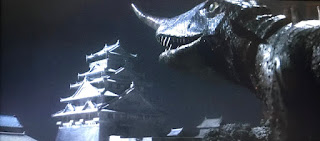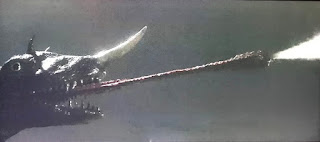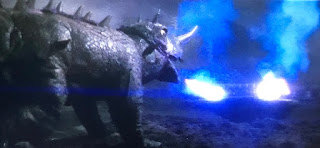"I realized that I had the opportunity of doing a series in the genre of the 'creature films' of the Forties that featured Frankenstein, the Wolfman, Jekyll and Hyde.
But all those characters were evil - and the Hulk was not evil.
He is the personification of anger.
He is anger brought to a physical sense."
-Bill Bixby, The Hulk #10 Magazine (August 1978)-



One could imagine master of disaster Irwin Allen would have enjoyed this particular slice of episodic television delivered by The Incredible Hulk in the form of Season One, Episode 11, Earthquakes Happen.
Stock footage is utilized from the film Earthquake (1974) which, surprisingly, Irwin Allen had no hand in. The disaster master loved his stock footage too. Though the success of his The Poseidon Adventure (1972) reignited interest in making the film Earthquake happen.

David Banner continues his fugitive-like existence by slipping into a nuclear research facility to utilize its gamma radiation equipment when an unexpected earthquake occurs turning the drama into a full on struggle for survival. A meltdown is imminent and while this is no HBO's Chernobyl (2019; an incredible mini-series worthy your time), the drama does keep the intensity on for 1970s disaster era excitement. Think of another disaster episode like Fire In Space (E14) for the original Battlestar Galactica (1978-79). Disasters were indeed the fashion du jour in the 1970s and Earthquakes Happen delivers its own Hulk-styled dramatic thrills within the disaster concept.
Oops! Missed painting that foot.

David Banner flashes back to the Pilot as he prepares an attempt to revisit his molecular problem.
The Blu-Ray offering delivers a minor, but still noticeable improvement over the DVD release, but is by no means perfect. Some scenes are dramatically improved while others are marginally improved. Still, the comparison with our last DVD review (E10 Life And Death) prior to this entry and you can note a marked difference in quality from the images.
The flashback sequence found in this episode from the Pilot will likely have Musings Of A Sci-Fi Fanatic revisit the Pilot on Blu-Ray just prior to launching into Season Two.

Full confession, this writer and Bill Bixby fan spent a large portion of the weekend I wrote this watching Bill Bixby in The Courtship Of Eddie's Father (Season One) and for me that series is endlessly entertaining thanks to the actor's comedic and dramatic timing in the series and some smashingly good dramatic writing complemented by then outstanding child actor Brandon Cruz and the lovely, immensely charming support of Miyoshi Umeki. Creator/director/actor James Komack and Kristina Holland are along for good measure in support. It is simply a perfect series.

The Incredible Hulk is heavier and Bixby is a dramatically compelling actor that continues to carry the day during much lengthier episodes (50 minutes) in that lead role when those episodes can sometimes feel a touch too long. The Courtship Of Eddie's Father (1969-1972) delivered tightly written 26 minute nuggets of character drama that still hold up today.
Remarkably The Incredible Hulk despite aspects of the show that clearly date the series squarely in the 1970s continues to deliver a quality TV show that this writer enjoys even if it doesn't shake things up in the mighty manner TV is allowed to do today. The rules were different and The Incredible Hulk played by them. Still it was fortunate to have a top tier actor and production team behind it that allows the show to live on as a Bixby classic.

Writer: Jim Tisdale/ Migdia Varela.
Director: Harvey Laidman.
Hulk Transformation #1: Earthquakes happen triggering Banner's first transformation.
Hulk Transformation #2: Hot steam from a water pipe as seconds count triggers Banner's second transformation.
You may remember actress Sherry Jackson from a host of TV programs including What Are Little Girls Made Of? (S1 E7) from Star Trek: The Original Series (1966) and The Space Croppers (S1 E25) for Lost In Space (1966).


























































































